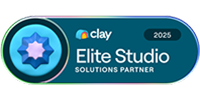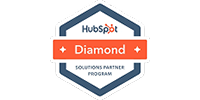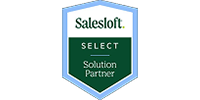Why Tracking Customer Acquisition Cost Isn’t Just for Startups
Customer acquisition cost, or CAC, has reached buzzword status amongst early-stage and venture-backed startups, as their ability to efficiently acquire new customers is often the key to receiving more funding and driving exponential growth. CAC isn’t just for startups, however. In fact, it may even be more important for mid-market organizations to obsess over tracking their customer acquisition cost. It should help guide all your sales and marketing activities.
In its simplest form, CAC is calculated by dividing the sales and marketing costs incurred to acquire your customers by the total number of customers acquired. The actual inputs may vary from company to company, but at a minimum, the costs should include direct labor and any direct marketing and advertising spend, such as your Google Ads budget.
Tracking CAC In The Mid-Market
Middle market organizations often neglect to track their CAC for one (or many) of the following reasons:
- They have a sustained client base that comfortably supports the business
- They don’t have the systems in place to allow for tracking
- They have never had to worry about how much it costs them to acquire a customer
Simply put, most mid-market companies don’t track it because they feel they don’t need to. These organizations are generally stable and “customer-funded,” and focus primarily on product and service delivery and fulfillment, and less on client acquisition.
What is Acceptable for Your Business?
Understanding the importance of CAC and knowing how to track it is just the beginning. Next, you must calculate and achieve an acceptable customer acquisition cost. This might vary from organization to organization, but typically a CAC that is equal to or less than 20% of the average lifetime value (LTV) of a customer is deemed acceptable. This means that if the average annual value of your customer is $20,000, and the average customer stays for three years, then your average lifetime value is $60,000. In this example, you should be willing to pay up to $12,000 to acquire a customer.
Note: startups and early-stage tech companies may track this a little differently. In the startup world, the lifetime value (LTV) to CAC ratio tends to be the driving metric, with most companies aiming to get to a 3:1 ratio. Once startups sustainably achieve this desired ratio they’ll pour resources into their demand generation programs to drive growth and earn market share.
Since mid-market businesses have already established themselves in their market space and tend to focus more on profitability and cash flow, a LTV:CAC ratio of 5:1 is more desirable.
How to Optimize to Achieve Your Goal
What if you measure your current cost and discover the result is worse than 20%? What are the next steps?
In most cases, it’s an issue with goal and KPI alignment between marketing and sales. Beyond that, there are often inefficiencies in the way those teams are working, such as:
- Reports examine the wrong metrics, or overlook key metrics.
- Marketing automation and CRM systems aren’t organized as well as they could be, or they’re underutilized.
- Marketing channels are outdated, too expensive, or just plain ineffective at generating quality leads.
- Experienced (and expensive) sales reps are spending valuable time on low-value activities, like prospecting.
- You’re overpaying for sales reps that aren’t producing.
- You’re trusting your marketing budget with an agency that is incentivized to spend more (ie. their fee structure is primarily based on % of managed spend).
In order to rectify those inefficiencies and get working toward your goal, leadership must get buy-in from all stakeholders (ie. marketing and sales) and create an environment with clear transparency into sales and marketing production. This can be especially difficult with experienced (a.k.a. expensive) sales and marketing assets that may be underperforming, but without a transparent view into what your investment is returning. You will also need a diligent and consistent analysis of marketing spend. Often, middle-market firms don’t look at their marketing spend critically enough. This is especially true when events and tradeshows make up a large portion of the marketing budget. Event spend can be substantial, and tying it back to revenue is often challenging, even with good systems infrastructure in place, but it's worth the effort.
Sometimes, it can be difficult to allocate company leaderships’ time from core business operations and customer service to focus on analyzing and improving CAC. That’s when it’s necessary to bring in an outside, unbiased team of experts for a critical perspective.
Click below to request a consultation if you’d like to learn more about customer acquisition cost, and how your business can start tracking and optimizing the metrics that matter.










